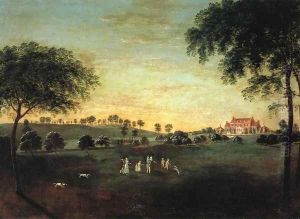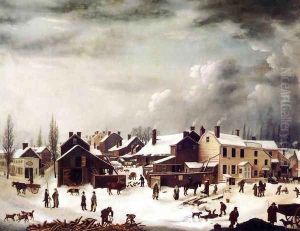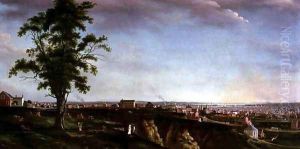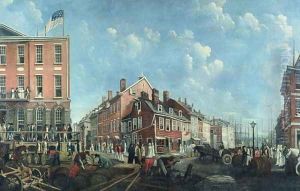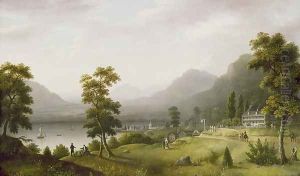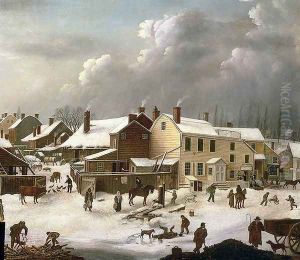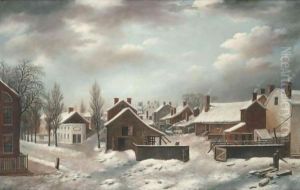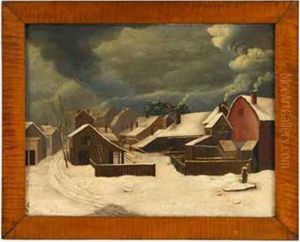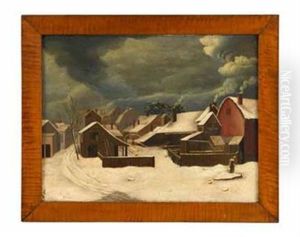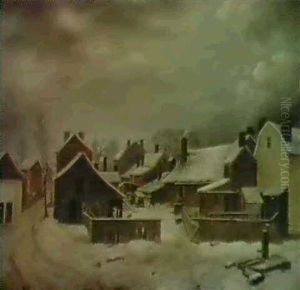Francis Guy Paintings
Francis Guy was an English-born American painter, primarily known for his detailed depictions of early American urban and rural life. Born in 1760 in England, Guy's early life and training in the arts remain relatively obscure, though it is known that he immigrated to the United States in the latter part of the 18th century, settling initially in Baltimore, Maryland, around 1795. His movement to America marked the beginning of his significant contributions to the American art scene, specifically through his landscapes and cityscapes that captured the essence of early American life.
Guy's work is characterized by its meticulous attention to detail, vibrant use of color, and the ability to capture the everyday activities of ordinary people, making his paintings valuable historical documents of the time. One of his most celebrated works is "Winter Scene in Brooklyn," painted in 1820, which provides a vivid portrayal of Brooklyn, New York, at the beginning of the 19th century. This piece, like many of his works, showcases Guy's talent in depicting the simplicity and complexity of life through his art, making him a notable figure in the transition from the colonial to the early national period of American art.
Throughout his career, Guy focused on the American landscape, urban settings, and its inhabitants as his primary subjects. His paintings not only offer a glimpse into the architectural and social landscapes of the time but also reflect the changing American identity post-Revolution. Despite his British origins, Guy's work is deeply embedded in the fabric of American art history, representing a unique perspective on the development of American society and its environments.
Francis Guy's contributions to American art were recognized during his lifetime, and his works continue to be celebrated for their historical value and artistic merit. His paintings are held in several prestigious collections, including the Brooklyn Museum and the New York Historical Society. Guy passed away in 1820, but his legacy lives on through his art, which remains a valuable window into the early 19th century American life. His ability to capture the everyday in such a dynamic and detailed manner has cemented his place as an important figure in the history of American art.
